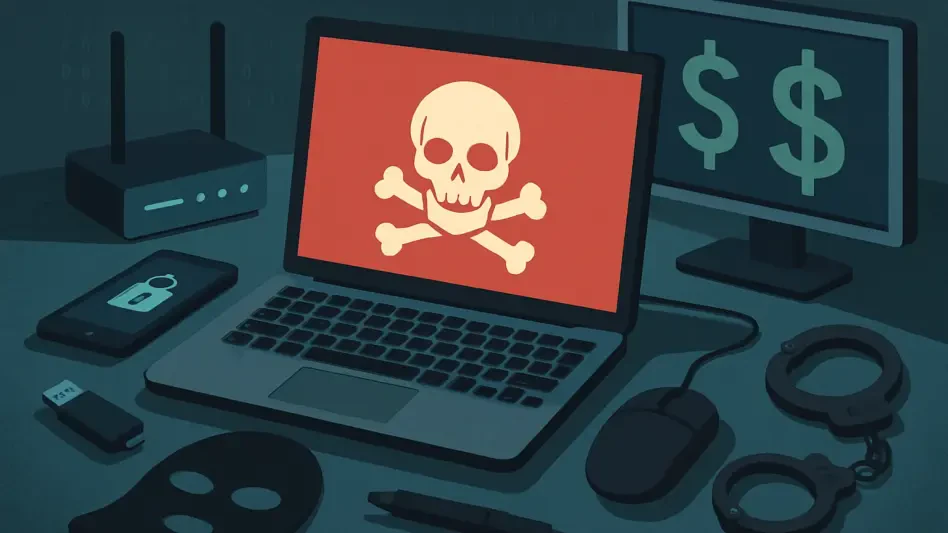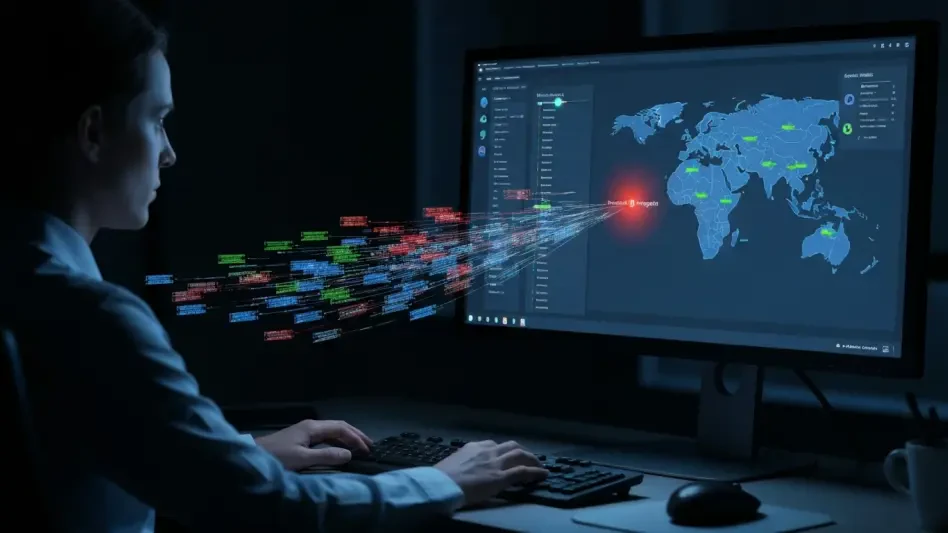In an era where digital threats are becoming more insidious, a disturbing trend has emerged in the cybercrime underworld with the introduction of a new Remote Access Trojan (RAT) marketed as a fully undetectable alternative to legitimate remote administration tools like ScreenConnect. This sophisticated malware is being positioned as a professional “crimeware-as-a-service” product, reflecting a growing level of expertise and organization among cybercriminals. Designed to bypass even enterprise-grade security measures, this RAT showcases advanced evasion techniques that challenge traditional defenses. The rise of such tools signals a shift in the landscape of cyber threats, where attackers are not only focusing on technical exploits but also exploiting human trust and system vulnerabilities. This development raises critical questions about the effectiveness of current security protocols and the urgent need for innovative strategies to combat these stealthy intrusions.
Unveiling Advanced Evasion Techniques
The ingenuity behind this new RAT lies in its ability to sidestep modern security mechanisms with startling precision. One of the primary methods involves the misuse of valid Extended Validation (EV) certificates, which are typically associated with trusted organizations. By leveraging these certificates, the malware suppresses warnings from browsers like Google Chrome and security features such as Microsoft Windows SmartScreen, creating a false sense of legitimacy. Additionally, the RAT employs social engineering tactics through fake landing pages that mimic trusted brands like Adobe Acrobat Reader, complete with authentic-looking branding. These deceptive pages trick users into downloading the malicious payload, often bypassing even the most cautious individuals. Beyond this, the tool incorporates anti-bot mechanisms and cloaked landing pages to evade automated scanners, sandboxes, and security researchers, ensuring that malicious content is delivered only to intended targets with chilling accuracy.
Another layer of sophistication is the RAT’s use of fileless execution techniques, which allow it to operate without leaving traditional footprints. By utilizing PowerShell commands, the malware loads executables directly into memory, sidestepping antivirus solutions that rely on file-based scanning. This approach renders many conventional detection methods obsolete, as there are no physical files to flag as suspicious. Furthermore, the strategic design ensures that the RAT remains undetected during initial infection and subsequent activities, providing attackers with prolonged access to compromised systems. The combination of these tactics highlights a critical gap in current cybersecurity defenses, where reliance on static signatures and file monitoring fails to address the dynamic, memory-based threats posed by such advanced tools. This evolution in malware design underscores the pressing need for adaptive security solutions capable of countering these elusive strategies.
Dual-Purpose Functionality and Market Accessibility
This RAT stands out not only for its stealth but also for its versatility as both a remote access tool and a loader for additional malicious payloads. Functioning as a persistent surveillance mechanism, it grants attackers real-time control over infected systems through remote viewer capabilities, enabling detailed monitoring and manipulation. Simultaneously, it acts as a staging platform for deploying secondary threats such as ransomware, spyware, and credential stealers, amplifying the potential damage. This dual-purpose nature facilitates manual data exfiltration, credential harvesting, and lateral movement across networks, making it a formidable tool for sustained attacks. The ability to serve multiple roles within a single piece of malware reflects a growing trend among cybercriminals to maximize the impact of each intrusion, posing significant risks to both individual users and large organizations with interconnected systems.
Compounding the threat is the professionalized nature of the underground market where this RAT is sold, complete with offers of demos and guaranteed delivery within 24 working hours. Such service-oriented features lower the barrier to entry for less-skilled attackers, democratizing access to sophisticated cybercrime tools. By mimicking legitimate business models, sellers create an illusion of reliability and trustworthiness, further blurring the lines between lawful and illicit operations. This accessibility means that even those with minimal technical expertise can launch devastating attacks, expanding the pool of potential threat actors. The implications are profound, as the proliferation of such ready-to-use, stealth-tested malware increases the frequency and severity of cyber incidents, challenging security teams to keep pace with an ever-growing array of adversaries equipped with professional-grade tools.
Exploiting Trust in Digital Ecosystems
A broader and more insidious trend exemplified by this RAT is the exploitation of trust inherent in digital processes and legitimate tools. By masquerading as trusted software like ScreenConnect and manipulating browser trust indicators through EV certificates, cybercriminals blur the distinction between safe and malicious applications. This tactic preys on the natural inclination of users and systems to trust established protocols, making it exceedingly difficult to identify threats without advanced scrutiny. Security experts have noted that such strategies represent a significant challenge, as they shift the battleground from purely technical exploits to the realm of psychological manipulation, where user behavior becomes a critical vulnerability exploited with alarming precision.
The consequences of this trust exploitation extend beyond individual infections to systemic risks across entire networks. As attackers refine their methods to mimic legitimate processes, distinguishing between benign and harmful activities becomes a daunting task for even the most robust security systems. This blurring of lines necessitates a reevaluation of how trust is assigned in digital interactions, pushing for solutions that incorporate behavioral analysis and context-aware defenses. The consensus among industry professionals is clear: traditional safeguards alone are insufficient against adversaries who weaponize trust itself. Addressing this issue requires a multifaceted approach that combines user education with cutting-edge technologies designed to detect anomalies in real time, ensuring that the foundational trust in digital ecosystems is not continually undermined by such deceptive practices.
Navigating Future Defenses Against Evolving Threats
Reflecting on the emergence of this undetectable RAT, it becomes evident that cybercriminals have reached new heights of sophistication by integrating advanced evasion techniques with trust-exploiting strategies. The use of EV certificates and fileless execution has proven to be a game-changer in bypassing conventional security measures, while the professional marketing of such tools has widened the threat landscape significantly. Looking back, the dual-purpose functionality of the RAT as both a surveillance tool and a loader has amplified the potential for widespread damage, challenging defenders at every turn. The exploitation of trust in digital systems has further complicated the ability to distinguish threats, marking a pivotal shift in cybercrime tactics.
Moving forward, the cybersecurity community must prioritize the development of dynamic defense mechanisms that go beyond static detection methods. Investing in technologies that focus on behavioral analysis and real-time anomaly detection can help counter the stealthy nature of modern malware. Additionally, enhancing user awareness around social engineering tactics remains crucial to breaking the chain of deception. Collaboration between industry stakeholders to share threat intelligence and develop standardized protocols for certificate validation could also mitigate the abuse of trusted indicators. As cyber threats continue to evolve, adapting to these challenges with proactive and innovative solutions will be essential to safeguard digital environments against increasingly cunning adversaries.








